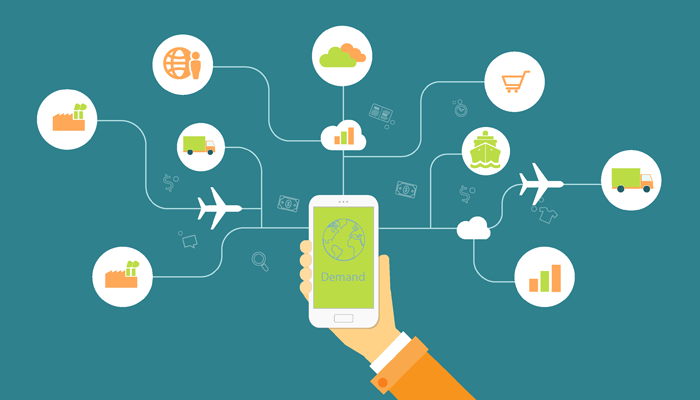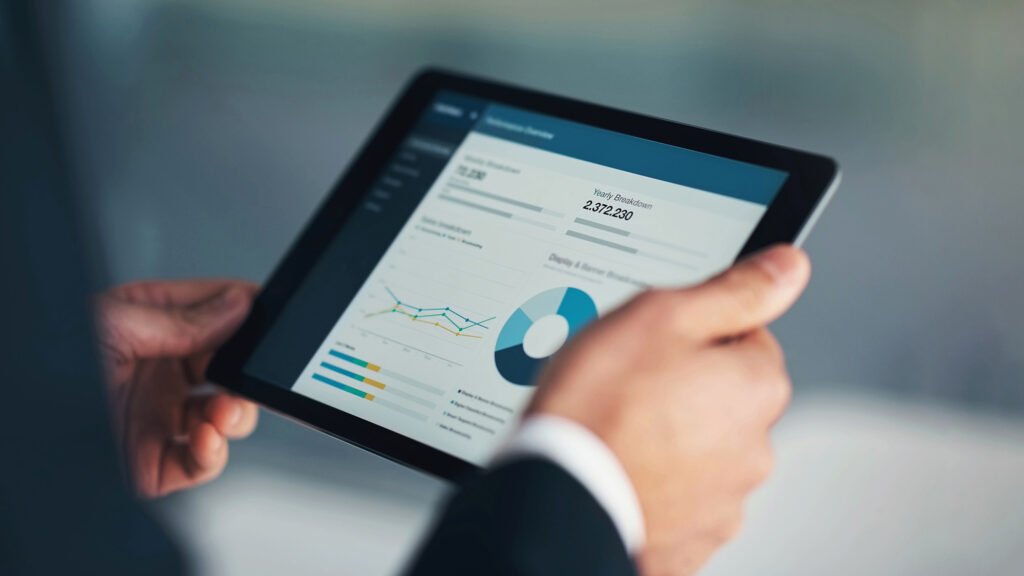
Supply Chains turn Digital – B2B lags behind – Great Opportunities
B2B lags behind. Why?
It’s easy to assume that business digitalization is already far advanced. According to recent research, however, the majority of the work remains to be done. If we look at businesses in general, not only supply chain management, industries are less than 40 percent digitalized according to McKinsey & Company (see table below), despite the relatively deep penetration of these technologies in media, retail, and high tech. What’s interesting with this study, is that Automotive and Consumer Packaged Goods (CPG) come in as laggards. Both of these industries, on the other hand, are leading when it comes to digitalization of the supply chain forecast-to-invoice process, at least between OEM’s and Retail & Wholesalers on the one hand side and Tier 1 players on the other.
The other interesting thing about the status of digitalization is that B2B-companies’ overall digital maturity is below B2C. The reason is to a large extent explained by the fact that B2C consists of the “C”, i.e. Consumers. This means that B2C companies don’t have to address the complexity of traditional ERP system integration, where processes deviate and data needs to be synchronized and manually interpreted before it can be used for planning purposes. Another important fact, is that B2C, by definition, is the last downstream part of the supply chain. Moving further upstream, businesses become B2B and the level of digitalization turns lower again.
Looking at the supply chain B2B integration (typically the forecast-to-invoice process) specifically, the level of digitalization is much lower compared to the general business digitalization. According to a Stanford Global Supply Chain Management Forum study from June 2013, only 7-10 percent of the 75 companies (from North America, EMEA, ASPAC) covered by the study exchange transactions electronically with 81-100 percent of their customers, suppliers or other business partners. Since then, little has happened.
The old linear, siloed concept of the supply chain is outdated – Now what?
For some time now, it has been clear that the old linear, siloed concept of the supply chain is outdated. However, it won’t be replaced by IoT-based solutions, Scan Based Trading (SBT) or other cloud-based solutions providing real-time transaction flow data. But since many supply chain experts and management discussions are predicting that IoT is going to revolutionize everything, from how products are manufactured to warehousing, transportation and logistics in general, time is right for talking supply chain. What I mean is that most companies understand the importance of spending time and money on the horizontal perspective of their businesses, which inevitably involves collaborative processes with customers, suppliers and related partners in the network of information and goods flow. This, in turn, requires interaction with other business critical systems throughout the supply chain (e.g. ERP systems), which puts the finger on the biggest challenge there is when it comes to seamless, responsive, and real-time-based supply chains and, hence, digital supply chains.
Even though we during recent years have seen a steady movement from ERP software to cloud-based ERP, the challenges related to integrating processes and underlying data between companies remain. Overcoming this hurdle, requires global standardization of process work flows, involvement from ERP systems vendors to a much higher degree than today, and real-time data synchronization. What’s promising, is that IT systems integration, as part of supply chain digitalization, is a hot topic for European supply chain managers and even top management, driving substantial investments in IT integration and hopefully standardization as well.
A great opportunity for leaders, but a clear business risk for laggards
Moving up the digital curve matters because B2B digital leaders turn in stronger financial performance. According to a recent McKinsey study, top-quartile B2B players generate 3.5 percent more revenue and are 15 percent more profitable than the rest of the B2B field.
Given the substantial financial benefits from making your supply chain more digital, you might think that most companies have their digital strategy up their sleeves. But only the outperforming companies create digital strategies that are designed to make and shape markets, and back them with the necessary resources. Most B2B companies, however, still handle their digital strategy as a sideshow. A great opportunity for leaders, but a clear business risk for laggards.
Insights

If you are interested in learning more about how to create a powerful connected supply chain, here are our latest insights.
Tech papers

To help you get a deeper and better understanding of our solutions and your supply chain, we have developed a number of detailed tech papers on different subjects.
-
Necessary
These cookies are not optional. They are needed for the website to function. -
Statistics
In order for us to improve the website's functionality and structure, based on how the website is used. -
Experience
In order for our website to perform as well as possible during your visit. If you refuse these cookies, some functionality will disappear from the website. -
Marketing
By sharing your interests and behavior as you visit our site, you increase the chance of seeing personalized content and offers.


